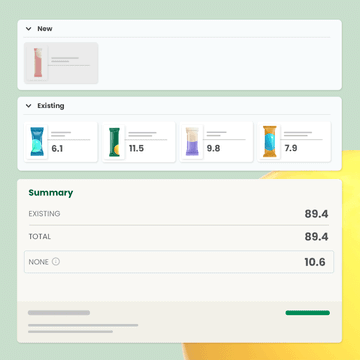


We help QSR brands understand how to drive change in their categories.
Menu Optimization
What is the impact of adding a new item to your menu? Or removing an item altogether? These are just two of the frequent questions we help our clients in QSR answer about their own portfolios. Tools like our Market Simulator dashboard and Virtual Menu simulator allow you to quickly understand the impact of these decisions.
Early-Stage Innovation Testing
Research teams at QSR companies need a way of standardizing their early-stage innovation testing while maintaining the agility and speed of modern SaaS software. Our proprietary Upsiide platform is used to screen and assess menu, campaign, and pack innovations. Our teams work with you to develop specific templates for your unique research needs.
Global Menu Design
You know that there is an opportunity to expand your menu offerings, but how do you ensure you're expanding in the right places or categories? And if you do figure that out, how can you develop the optimal new item(s)? We work with global restaurant clients to find white space and expand their menus through a mixture of qualitative and quantitative research.
How We Helped McDonald's Become Famous For Chicken
Based on our work together, McDonald's was able to identify short-term innovation opportunities and long-term innovation opportunities. Innovations were prioritized based on their consumer appeal, their fit with the McDonald’s brand and their ability to grow the McDonald’s customer base.

Dig has become an invaluable partner across so many aspects of our business – and especially for our global team. We’ve work with Dig on some of our most pressing and strategic customer problems to solve and they truly partner in finding real, workable solutions that connect insight to strategy. Dig goes beyond giving us the data and even the “why,” they are our partners in the “so what” for our business.
What We Bring to the Table
FORESIGHT RESEARCH
Align your innovation pipeline with macro-trends.
Where is your category moving? And which trends are worth investing in? Our growing team of qualitative researchers bring technology tools, primary research, and secondary signals to guide your innovations in the right direction.
VIRTUAL MENU
Put your menu (innovations) to the test.
Dig Insights developed a proprietary tech solution called Virtual Menu, an interactive experience for a respondent that mimics the experience of ordering off the menu. Over several choice screens, respondents make purchasing decisions off your menu. Across those screens, we experiment with product availability / pack size / pack configuration / regular price / depth of discount.
Unlike a conventional conjoint, each item has an independent set of prices and discounts. This gives us total control over the experiment and the data modeling.
MARKET SIMULATOR
Pinpoint the impact of adding or removing menu items.
The Market Simulator dashboard on Upsiide lets your teams quickly and easily understand where your ideas source volume from, so that you can make educated decisions about what to add or remove from your menu.
Until we found Upsiide, we were struggling to get quality insights that we could trust, quickly and within budget. Upsiide lets us prioritize our ideas so we know that we're really putting only the best 10 into a deep dive. Upsiide helps us fine-tune our ideas, test them against each other, and ensure we truly focus and invest on the ones with the best potential. You can't put a price on that.
Don't just take our word for it...
Check out our approach to research and analysis in action.
- How we Helped a Global Brand Fast Adapt a Product to the American Market with Qualitative Co-Creation Session
- How a Pharma Company Leveraged MaxDiff to Identify Which Claims Would Drive Trials
- How We Helped a Retailer Understand Breakthrough Appeal in a Saturated Category
- How Everipe's Data-Driven Innovation Approach Brought Them Certainty

